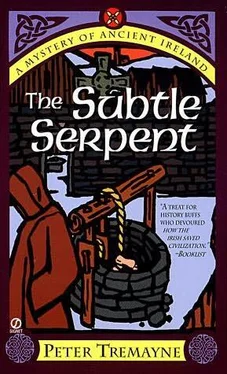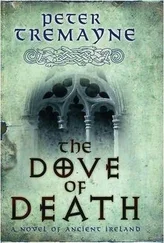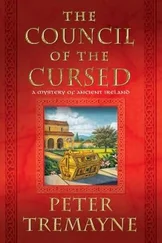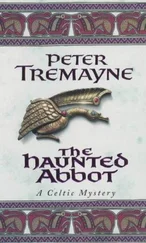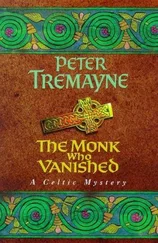Peter Tremayne - The Subtle Serpent
Здесь есть возможность читать онлайн «Peter Tremayne - The Subtle Serpent» весь текст электронной книги совершенно бесплатно (целиком полную версию без сокращений). В некоторых случаях можно слушать аудио, скачать через торрент в формате fb2 и присутствует краткое содержание. Жанр: Исторический детектив, на английском языке. Описание произведения, (предисловие) а так же отзывы посетителей доступны на портале библиотеки ЛибКат.
- Название:The Subtle Serpent
- Автор:
- Жанр:
- Год:неизвестен
- ISBN:нет данных
- Рейтинг книги:3 / 5. Голосов: 1
-
Избранное:Добавить в избранное
- Отзывы:
-
Ваша оценка:
- 60
- 1
- 2
- 3
- 4
- 5
The Subtle Serpent: краткое содержание, описание и аннотация
Предлагаем к чтению аннотацию, описание, краткое содержание или предисловие (зависит от того, что написал сам автор книги «The Subtle Serpent»). Если вы не нашли необходимую информацию о книге — напишите в комментариях, мы постараемся отыскать её.
The Subtle Serpent — читать онлайн бесплатно полную книгу (весь текст) целиком
Ниже представлен текст книги, разбитый по страницам. Система сохранения места последней прочитанной страницы, позволяет с удобством читать онлайн бесплатно книгу «The Subtle Serpent», без необходимости каждый раз заново искать на чём Вы остановились. Поставьте закладку, и сможете в любой момент перейти на страницу, на которой закончили чтение.
Интервал:
Закладка:
‘Was there some insane person at work here? Was the motivation some hatred of the sisters, hatred of the abbey, hatred of the abbess? Brother Febal certainly felt hatred in all those respects, particularly of Abbess Draigen, who had once been his wife. He, it was, who to tried to convince me thatDraigen had unnatural liaisons with the young novices. Brother Febal had more than enough hate to motivate such murders.’
She glance over her shoulder. Brother Febal was sitting staring at her with a malignant expression on his handsome features.
‘Febal’s accusations against Draigen were untrue.’
For the first time Abbess Draigen looked vaguely satisfied.
‘But,’ Fidelma continued after a pause, ‘was there some more subtle plot than the one suggested by Febal?’
Beccan cleared his throat.
‘Have you come to any conclusion?’
Fidelma raised her head and answered: ‘Yes. I trust you will bear with me while I tell you a story, which it is necessary to appreciate, in order to get to the truth of this matter. All that I claim, I can now prove.’
‘Then proceed, sister.’
‘Four hundred years ago the annals record that a fabulous gold calf was made and worshipped. But the High King Cormac Mac Art refused to indulge in this practice and condemned it. The story is that the priest of the gold calf was so angered that he killed Cormac by arranging for three salmon bones to stick in Cormac’s throat and choke him to death. Now this is symbolism again. Three salmon bones. It was merely a means of identification.
‘Not long before Sister Comnat and Sister Almu set out to Ard Fhearta a man came to the abbey with a copy of Cormac’s Teagasg Rí, Instructions of the King. This man had fallen on hard times and wanted to exchange the book for food. The man probably did not know the contents of that book. He brought it to the abbess for trade and she sent for the librarian Sister Comnat. The librarian agreed that it was a worthwhile exchange especially because she had noticed that there was a short biography of Cormac at the end of the book. In turn, she asked Sister Almu, her assistant, to look at the book and catalogue it.
‘Sister Almu did so. Imagine her excitement when she found an addition to the story of the gold calf. The fabulous beast, fashioned of gold, did exist, according to this text. Moreover, the priest of the cult of the gold calf was from this very area. Indeed, isn’t the symbol of the goddess known as the Old Woman of Beara, a cow? Isn’t Adnar’s fortress called Dún Boí, the fortress of the cow goddess. A calf is the offspring of the cow.’
‘We have heard this old folk story!’ cried Abbess Draigen, interrupting impatiently. ‘But when are we getting to the bottom of this tale?’
Beccan was exasperated by her continual interjections.
‘I have warned you once, mother abbess. It is not your place to interrupt. A fine of one sét for interruption. However, I am inclined to believe that this story grows tedious in the telling, Sister Fidelma. What has this to do with current events?’
‘The symbolism of the three salmon!’ replied Fidelma. ‘We know that the site of this abbey was formerly a pagan centre. And we know that it is now called the abbey of The Salmon of the Three Wells. That is not only a euphemism for the Christ but it links to the pagan past. The fabulous gold calf was hidden in the caves under this abbey. Most will have seen the crude carving of the calf on the wall of the cave used as a store room. There is a similar carving in the cave next to it.’
There was a murmuring of excitement from the community.
‘Sister Almu, reading the text, was the first to realise this. The story said that the priests of the gold calf took the name Dedelchú, hound of the calf, and dwelt here in isolation. Then Necht the Pure came to convert the land to the new Faith. She was able to drive out the pagan priests. According to the text, under the abbey, for over one hundred years, ever since Necht the Pure drove out the pagans and founded this community, the gold calf had been hidden and probably forgotten about apart from this one reference in a local book.Imagine how excited Almu must have been and, more particularly, imagine the fortune such a fabulous statue would command. It was literally worth its weight in gold for it was, according to the story, solid gold.’
‘Can you prove this?’ Beccan demanded.
Fidelma turned to Eadulf who handed her the two soiled pages of vellum.
‘These two pages were recently cut from the book and contain this story. They were found on the body of Torcán.’
‘Proceed,’ Beccan grunted, glancing at the vellum sheets.
‘I discovered that Sister Almu was a close friend of Sister Siomha. A very close friend. So, naturally, the first person that she went to tell of her find was Síomha. And out of that conversation came the desire to find and possess that gold calf. The one motive that has remained constant in all the sorry events of this story has been greed. Didn’t the poet Lucan say that greed is a cursed vice and if enough gold is offered a person would, even if they were starving to death, part with their small hoard of food to possess it? In this story Sister Síomha was particularly starving but hers was a starvation of a moral and spiritual nature.
‘Sister Síomha was so overcome with greed that she even betrayed her friend Almu. She persuaded Sister Almu to say nothing about the story, perhaps saying they would discuss the matter on her return from Ard Fhearta. As soon as Sister Almu was gone, Síomha immediately drew a third person into this story. To that third person, Síomha told all. Using the pages of the book as a guide, Síomha and her companion found the place where they thought the fabulous beast was hidden but the entrance, in the abbey’s subterraneus, had been blocked in by rocks and earth.
‘In order to gain the time and space for her companion to excavate the entrance into what they thought was a treasure cave, Síomha volunteered to take as many of the night watches as she could in the tower. There was only one person who heard the knocking as the passage was excavated andthat was Sister Berrach. Sister Berrach, an intelligent young woman who through prejudice had to put on an act that she was almost half-witted, was in the habit of going to the library each morning well before dawn to read — she did not want her fellow sisters to know how intelligent she was. But even Sister Berrach thought the banging was merely an extension of the sounds often heard coming from the hidden cave under the chapel. That knocking, by the way, was due to two old wooden casks floating on an underground pool incited by the sea water from the inlet which flooded every now and again. In that presumption, the Abbess Draigen was correct.’
Fidelma paused as she saw Beccan’s scribe having difficulty to keep up with her.
‘Síomha’s companion had only just broken through to the second cave when a complication arose. Sister Almu returned unexpectedly to the abbey. There had been a terrible twist of fate, Sister Comnat and Sister Almu had been taken prisoner because they had discovered the conspiracy by Gulban, the chieftain of the Beara to aid the Ui Fidgenti in an insurrection against Cashel. This was an entirely unrelated set of events.
‘Sister Almu sought to escape. Now there was a young Fidgenti prince at the place where the sisters were confined. Almu, having made one escape attempt and been scourged for it, knew there was little chance of her escaping from the confines of the copper mines, where she was being kept a prisoner, unless she had some help. She proceeded to ingratiate herself to this young man. Almu, although I did not know her, I judged to be an astute judge of personality. She knew that greed was a prime factor in the young man’s thinking. She told him the story of the gold calf and promised to share the secret of the gold calf, not realising that her friend had already betrayed her trust.’
Читать дальшеИнтервал:
Закладка:
Похожие книги на «The Subtle Serpent»
Представляем Вашему вниманию похожие книги на «The Subtle Serpent» списком для выбора. Мы отобрали схожую по названию и смыслу литературу в надежде предоставить читателям больше вариантов отыскать новые, интересные, ещё непрочитанные произведения.
Обсуждение, отзывы о книге «The Subtle Serpent» и просто собственные мнения читателей. Оставьте ваши комментарии, напишите, что Вы думаете о произведении, его смысле или главных героях. Укажите что конкретно понравилось, а что нет, и почему Вы так считаете.
